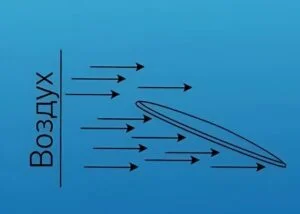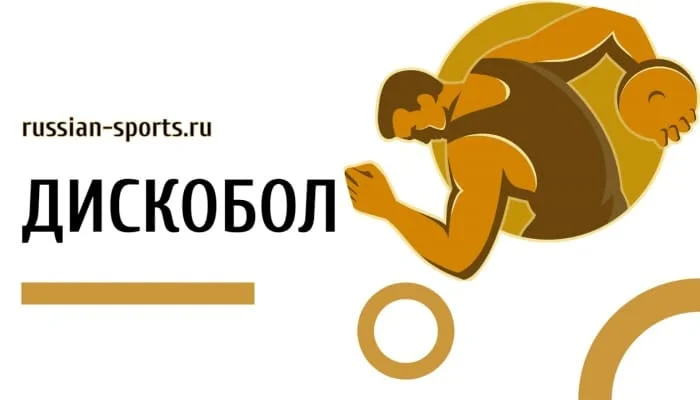In the article “Discobolus” we will talk about the throwing discipline, which was popular in ancient times, we will talk about the features of discus throwing.
#Discobolus #DiscusThrowing #Athletics #Discobol
Athletics includes several different disciplines, such as running, walking, jumping and, of course, throwing. Throwing different objects has been used by our ancestors since time immemorial. Ancient people hunted with stones and primitive darts. Throwers, javelin throwers and darts were a huge force in the ancient armies, because there were no firearms back then.
But gradually throwing became not only an attribute of hunting or fighting, it became a subject of competition in skill, i.e. a sport. The ancient Olympic Games were contested by throwing discus and javelin, and similar events were included in the first modern Olympics.
Today, the discus, javelin, hammer and shot put are among the discus, javelin and javelin throwing disciplines. Each of these disciplines has interesting features. For example, hammer throwers do not actually throw a hammer, but a seven-kilogram ball connected to the handle with a steel wire.
Today, the discus, javelin, hammer and shot put are among the discus, javelin and javelin throwing disciplines. Each of these disciplines has interesting features. For example, hammer throwers do not actually throw a hammer, but a seven-kilogram ball connected to the handle with a steel wire.

The name for this sport has been retained since the 19th century, when athletes tried to throw a real heavy hammer as far as possible. An even more curious story is connected with the javelin throw.
In the mid-1980s, engineers had to change the design of the javelin by shifting the center of gravity forward. This was done to make the javelin fly WAY worse. In 1984, German track and field athlete Uwe Hohn threw the javelin 104.80 meters. Such a range might not have been safe for spectators. In order to avoid the danger, necessary changes were made to the design of the javelin.
But the discs do not fly so far and there is no need to change them. However, compared with ancient examples, modern discs have also undergone some changes. In ancient Greece, discs were made of stone and iron or wood, and weighed up to 5 kilograms.
Today the weight of the discus in men’s competitions is 2 kg, and in women – 1 kg. But it is not easy to throw such a light discus, and it is more pleasant that in such a difficult discipline our athletes take a worthy place.

Suffice it to recall the legendary discus thrower Nina Ponomareva, world record holder and two-time Olympic champion. Among men there is also famous Viktor Raschupkin, gold medalist of the legendary 1980 Olympics in Moscow.
Maybe there is a champion among you, the readers of the “Russian sports” portal who will set new world records in discus throwing. And today the best discus throwers are the German athletes: Gabriela Reinsch and Jürgen Schult. Gabriela Reinsch threw the discus for 76.8 meters, and Jürgen showed the result of 74.08 meters.
All throwing competitions pay special attention to safety, and discus throwing is no exception. The discus is thrown from a sector that is enclosed by a net, and that net is ready to stop a two-kilogram discus traveling at 25 m/s.
In addition, the net must be designed so as to eliminate the possibility of ricochets. Otherwise, the disc may hit the barrier and bounce back to the athlete.

As for the disk itself, it may be made of wood or other material permitted by the rules, with a metal ring around the edge. Both sides of the disc must be identical and have no protrusions, notches or sharp corners. This sports tool is characterized by smoothness, there is not a single roughness on it. So a good disc can be determined by touch.
How long does it take to learn how to throw a discus? The discus throwing technique is not an easy one that requires many years of practice and daily exercises to master. It is believed that an athlete of high rank can not be younger than 30 years, because the young discus thrower does not have enough experience for record throws.
The athlete must not only control his muscles perfectly, sending the disc at the right angle, but also need to be able to hit the wind. Take into account the speed of the air flow and determine how it hinders or helps the disc’s flight.
If the thrower fails to cope with this task, the trajectory of the disc will be torn (unstable), the projectile will flutter, it will fall over on the rib or even fall before time. It is no exaggeration to say that discus throwing is a whole science. The physical qualities of the athlete also play a significant role.
Heavy weight does not mean that discus throwers are fat. On the contrary, it takes great physical strength to send the projectile into a long flight, so the athlete’s weight is due to a large muscle mass. It is built up during training, among which a lot of attention is paid to weightlifting. Girls throwers are more fragile, but the height of the best athletes that is called “model”.

We think that most have seen the famous sculpture of the ancient Greek sculptor Myron – Discobolus, and paid attention to his unusual pose. It is due to the way that the athletes of that time launched the disc so that it flew as far as possible. But, frankly, they were wrong.
The discobols of antiquity launched the disk so that it flew, rotating in a vertical plane around an axis parallel to the earth. He cut through the air like an axe blade and rushed forward swiftly. That’s fine, since he cut through the air, it means he could have flown far away. There is logic in this, but not in everything.
The air resistance is really not great. But if you launch the disk so that its plane is deflected from the horizontal by about 37 degrees, it will fly much further. The disk thrown in this way will descend more slowly, because in addition to the force of gravity, another force will act on it. This force is called the lifting force, and it is what allows airplanes and helicopters to fly.
The fact is that the incoming air flow on the flying disk is divided by it into two parts. The lower part of the air flow has more pressure than the upper part. This effect is one of the manifestations of Bernoulli’s law discovered by the physicist. Since there is more pressure at the bottom than at the top, it pushes the disk upward, creating a lifting force.

The greater the velocity of the air flow against the disk, the greater the lift. This means that the headwind does not interfere with the disc, but rather helps it to fly as far as possible.
It is impossible to send a throwing disc into space, but it is possible to throw it to the Olympic gold. It’s important to start training in time, the sooner the better. Of course, if you are already 13-14 years old, because this is the optimal age for getting acquainted with throwing. You have already formed the coordination of movement, which you can develop further.
It is worth starting with special exercises with throwing objects, and this will be preparatory work before the upcoming workouts. You can start more serious studies at the age of 15-16, then they begin to study the technique of discus throwing. They begin to train at full strength from the age of 17. That’s how, gradually, young athletes overcome the path to discus throwing competitions.
In order to become a real discobolus, you need patience and perseverance. And if you are not yet old enough for this sport, then you should enroll in the athletics section, the discipline of which is throwing. In it you will get all the necessary skills, which will then be useful in discobol.
Throwing disciplines
FAQs
What is discus throwing?
Discus throwing is an athletic discipline in which an athlete uses his/her hands to throw a discus over a maximum distance. An athlete who throws the discus is called a discus thrower (Greek for "discus thrower"). The sport has been represented in the Olympic Games since 1896.
Why is the world record for discus throwing higher for women?
Indeed, the world record in discus throwing for women is higher by 2.72 meters than for men, and it is associated primarily with the weight of the sports projectile. Men's throwing discus weighs 2 kg, and women's throwing discus weighs 1 kg. Both world records (74.08 m and 76.80 m) were set by representatives of the GDR in the late 80s.
What injuries does a discobolus get?
All injuries in sports occur due to high loads and mistakes of athletes. The most common injury for discus throwers is dislocation of the shoulder. In second place is the stretching of the back and neck. On the third – injuries of the hand and hands.









